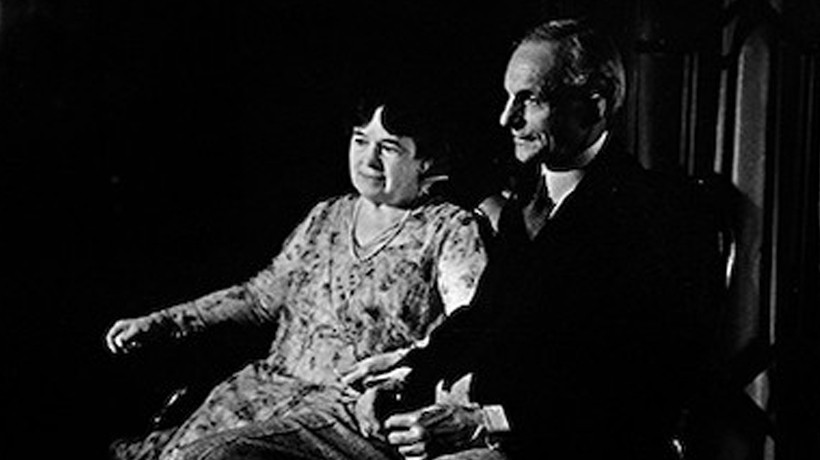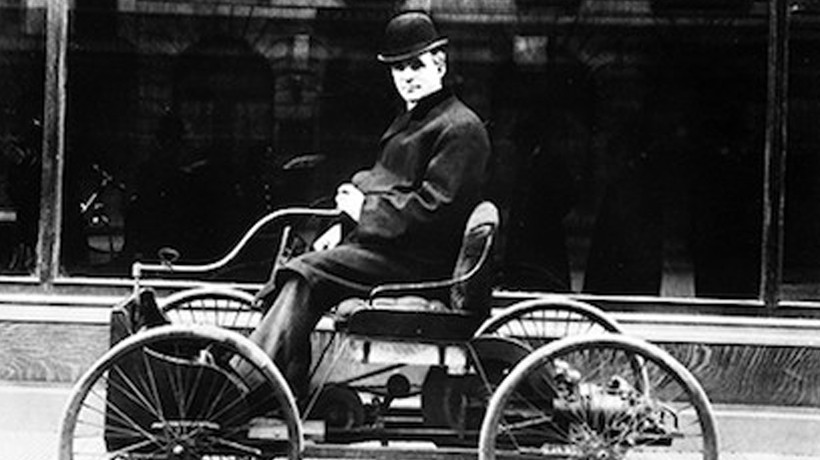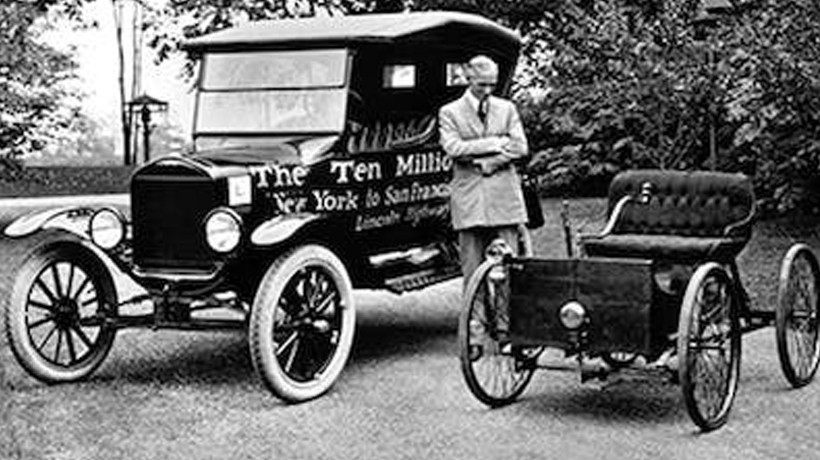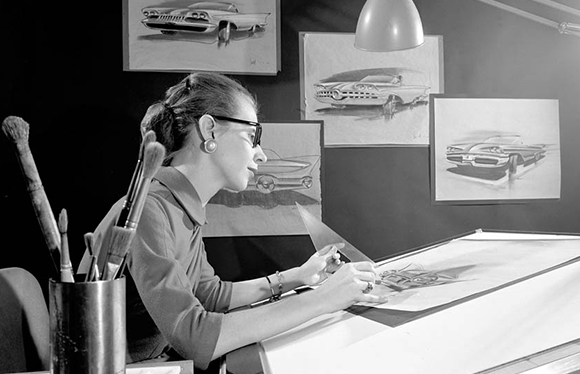
Henry Ford Biography
Ford Motor Company Founder
Henry Ford, founder of Ford Motor Company, was born in Springwells Township, Wayne County, Michigan, on July 30, 1863, to Mary (Litogot) and William Ford. He was the eldest of six children in a family of four boys and two girls. His father was a native of County Cork, Ireland, who came to America in 1847 and settled on a farm in Wayne County.
Young Henry Ford showed an early interest in mechanics. By the time he was 12, he was spending most of his spare time in a small machine shop he had equipped himself. There, at 15, he constructed his first steam engine.
Later, he became a machinist’s apprentice in Detroit in the shops of James F. Flower and Brothers, and in the plant of the Detroit Dry Dock Company. After completing his apprenticeship in 1882, he spent a year setting up and repairing Westinghouse steam engines in southern Michigan. In July 1891, he was employed as an engineer at the Edison Illuminating Company of Detroit. He became chief engineer on November 6, 1893. Thomas Edison would become a lifelong mentor and friend to Henry Ford.
On April 11, 1888, Henry married Clara Jane Bryant of Greenfield, Michigan, the daughter of Martha (Bench) and Melvin Bryant, a Wayne County farmer. Clara lived to the age of 84 and died on September 29, 1950. They had one child, son Edsel Bryant Ford was born on November 6, 1893.

Henry Ford’s career as a builder of automobiles dated from the winter of 1893 when his interest in internal combustion engines led him to construct a small one-cylinder gasoline model. The first Ford engine sputtered its way to life on a wooden table in the kitchen of the Ford home at 58 Bagley Avenue in Detroit. A later version of that engine powered his first automobile, which was essentially a frame fitted with four bicycle wheels. This first Ford car, the Quadricycle, was completed in June 1896.

On August 19, 1899, he resigned from the Edison Illuminating Company and, with others, organized the Detroit Automobile Company, which went into bankruptcy about 18 months later. Meanwhile, Henry Ford designed and built several racing cars. In one of them, called Sweepstakes, he defeated Alexander Winton on a track in Grosse Pointe, Michigan on October 10, 1901. One month later, Henry Ford founded his second automobile venture, the Henry Ford Company. He would leave that enterprise, which would become the Cadillac Motor Car Company, in early 1902. In another of his racing cars, the 999, he established a world record for the mile, covering the distance in 39.4 seconds on January 12, 1904 on the winter ice of Lake St. Clair.
On June 16, 1903, Henry and 12 others invested $28,000 and created Ford Motor Company. The first car built by the Company was sold July 15, 1903. Henry owned 25.5% of the stock in the new organization. He became president and controlling owner in 1906. In 1919, Henry, Clara, and Edsel Ford acquired the interest of all minority stockholders for $105,820,894 and became the sole owners of the Company. Edsel, who succeeded his father as president in 1919, occupied that position until his death in 1943, when Henry Ford returned to the post.
In September, 1945, when he resigned the presidency for a second time, Henry Ford recommended that his grandson, Henry Ford II, be elected to the position. The board of directors followed his recommendation.
In 1946, Henry Ford was lauded at the Automotive Golden Jubilee for his contributions to the automotive industry. In July of that same year, 50,000 people cheered for him in Dearborn at a giant 83rd birthday party. Later that year, the American Petroleum Institute awarded him its first Gold Medal annual award for outstanding contributions to the welfare of humanity. The United States government honored him in 1965 by featuring his likeness with a Model T on a postage stamp as part of their Prominent Americans series. In 1999, Fortune magazine named Henry Ford the Businessman of the Century.

In collaboration with Samuel Crowther, he wrote My Life and Work (1922), Today and Tomorrow (1926), and Moving Forward (1930), which described the development of Ford Motor Company and outlined his industrial and social theories. He also published Edison, As I Know Him (1930), with the same collaborator. Doctor of Engineering degrees were conferred on him by the University of Michigan and Michigan State College (now Michigan State University), and he received an honorary Doctor of Law degree from Colgate University.
Henry Ford died at his residence, Fair Lane Estate in Dearborn, at 11:40pm on Monday, April 7, 1947, following a cerebral hemorrhage. He was 83 years old. At his bedside were Clara Ford and members of their household staff. At the time of his death, flooding on the Rouge River, which flows through the grounds of Fair Lane, had cut off electrical power. Old-fashioned kerosene lamps and candles were the only sources of light in the house, creating a scene similar to his birth in the same county many years before.
Funeral services were held at St. Paul’s Episcopal Cathedral in Detroit, Michigan, and Henry Ford was laid to rest in the family cemetery at St. Martha’s Episcopal Church, in Detroit.


